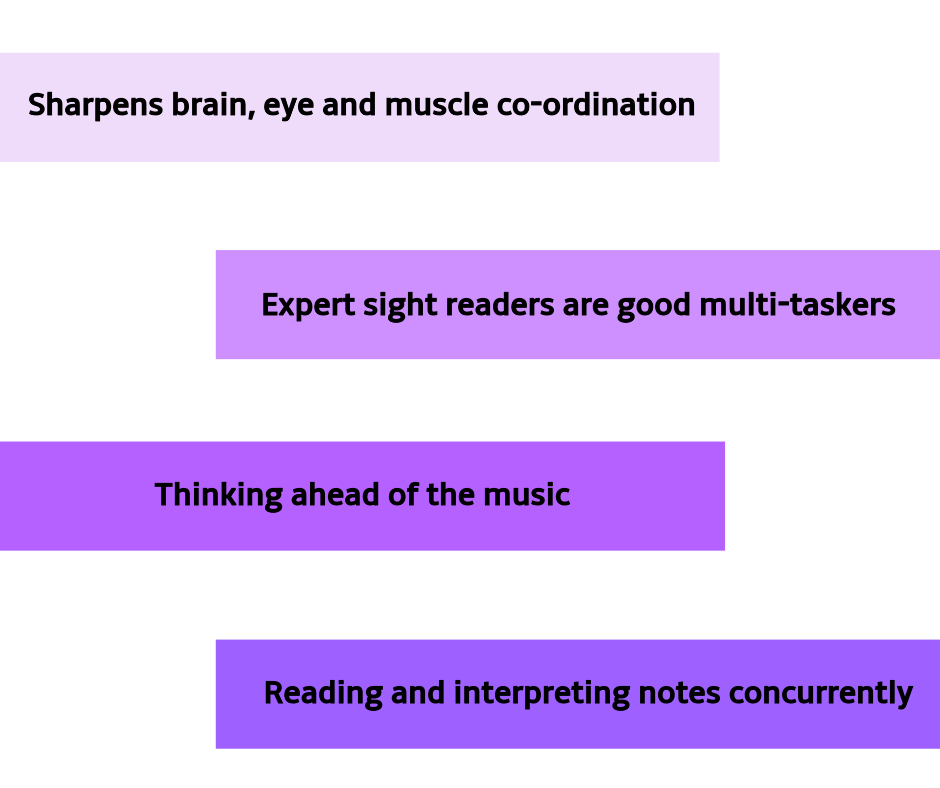Concert pianist Sunny Li talks through the basics of sight-reading
Sight-reading is defined as the art of reading and performing a musical piece without previous knowledge, insight or rehearsal of the piece.
Although quite a number of people are passionate about music, many of them find it very hard to sight-read. It is also a challenge for musical tutors, including myself. I find this the most challenging lesson for beginners. Most people tend to stay away from the complexity of sight-reading but this article highlights some of the important tips required if you wanted to master the art of sight-reading.
Getting started

©Pexels
Sight-reading does not require a single skill but rather a number of skills perfected together. There needs to be mastery of the keyboard, mastery of musical notes and understanding of the musical score. The first step is to review the score thoroughly.
The left and right hands will be most likely playing very different things, so make sure you give the score a good look over before beginning.
You also need to make sure that the piano is correctly tuned and all keys are functioning well. Check that you are seated in a comfortable posture with the score placed in line with the front eye view to avoid straining. Students who have mastered the keys do not focus on looking at the fingers when playing, but those who have not mastered the keyboard need to find a balance between reading the score and looking at the keyboard.
How to perfect the art of sight-reading

©Pexels
1. Develop the ability to skim ahead. Application of this technique is quite difficult in sight-reading music because reading not only requires eye and brain co-ordination, but motor skills coordination as well as correct interpretation of the piece being read.

2. Reading ahead is also good for prediction purposes in order to avoid disaster. A musician is able to know what to anticipate in a musical piece by reading ahead. Take Mozart’s Piano Sonata in C major as an example (see below). When you begin to play the first line, try and read ahead to the second line. Be ready and be prepared.


3. In order to achieve good results, the students should also focus on practising different musical scores. Through practice, a student is able to learn the basics. Under my tutelage, 17-year-old beginner Jason Sum and 18-year-old Teniola Dowse receive two different manuscripts for practice at the beginning of every week.

4. When reading a piece, a beginner should not directly jump into playing the piece first. It is important to skim through the entire piece to get a feel of what is expected from it.

5. Quickly assess the bars to figure out the rhythm of the song and look out for any score signs such as transposing of a piece, tonal variation and change in pace. This should only take a minute or two since the students are familiar with interpretation of musical signs and symbols.

6. Students need to master musical vocabulary and techniques before learning the art of sight-reading. This will ease their experience in translation of the musical piece before and during the playing process.

7. It is also very important for students to stay calm throughout the entire process. Try out some breathing exercises. Check out tip 5 from our article, 8 tips on how to get rid of nerves.

8. One of the ways to ease the sight-reading process is by practising with other students. This is good for building confidence and killing anxiety. Students are likely to respond better to each other’s criticism as opposed to mine as their tutor.

9. In order to succeed at anything, players need to develop a positive attitude towards it. In my experience, those who start off with a negative attitude towards sight-reading are those who struggle the most. It is important to stay positive as the positive energy will be reflected in your outcome.
Benefits of sight-reading

The more a beginner practises sight-reading, the better they become. With time, sight-reading becomes an easy process as the students are able to master the art and tricks involved in sight-reading.
Here is some advice to all musical beginners: no-one is born a gifted sight-reader. This art, just like any other, requires a lot of practice and confidence in performance. With the tips mentioned above, any individual has the ability to master sight-reading.
Factors limiting the art of sight-reading

© Pexels
A number of factors can contribute to the diminishing of the sight-reading process. These include poor reading skills, poor sense of keyboard harmony, concentrating on fingers instead of music, an underdeveloped aural capacity and the pressure of excelling placed on students by their teachers.
Poor reading skills is a problem faced by people who are not generally avid readers. When reading manuscripts, poor readers are unable to read ahead and get stuck on one area trying to interpret it before moving to the next. This style interrupts the flow of the musical piece. A beginner who has an underdeveloped aural capacity is one who is unable to interpret musical notes and signs.
Players who have a poor sense of keyboard harmony are those who constantly look at their fingers when playing. All tutors should be able to assess who qualifies to take sight-reading classes.
Want to work on other aspects of your playing? Try out one of our 3 best-selling cheat sheets! Visit our store here.
Written by concert pianist Sunny Li.









